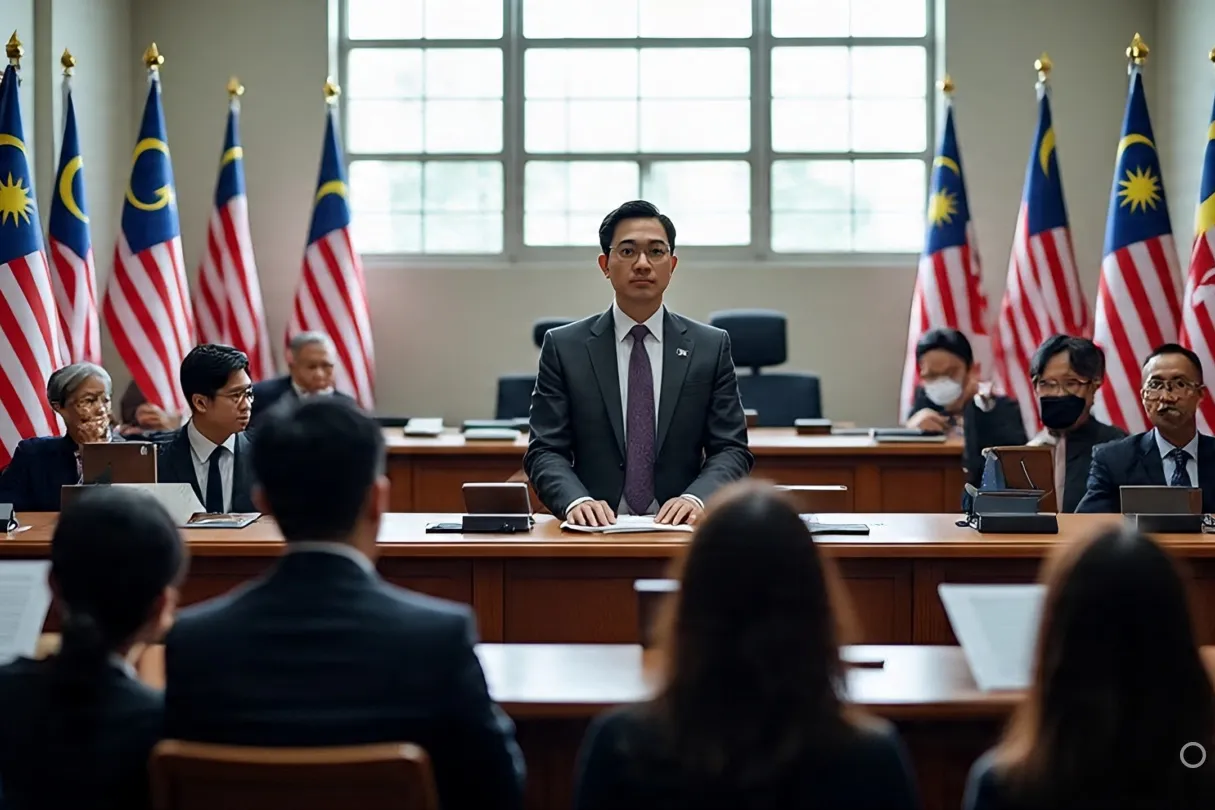🧪 The Conspiracy Begins: Why Singapore Was Dragged Into It
In early 2020, as COVID-19 spread with unprecedented speed, the world scrambled to understand its origins. Most eyes focused on Wuhan, China—but as online sleuths and conspiracy theorists dug deeper, Singapore’s name began surfacing in forums and YouTube exposés. The allegation? That Singapore’s high-tech biomedical hubs had deeper ties to the virus’s origins—or even participated in a global cover-up.
- 🧪 The Conspiracy Begins: Why Singapore Was Dragged Into It
- 🧬 Biomedical Science in Singapore: A Global Research Node
- 💻 What the Theories Say—and Why They Don’t Hold Up
- 🕵️♀️ How Misinformation Gained Ground
- 🛰️ Reality Check: Singapore’s Timeline and Transparency
- 🧩 Why People Still Believe
- 🧠 Conspiracy or Just Global Science?
- 🔍 Final Takeaway: What This Teaches Us About Trust
🧠 Why Singapore? Because it was too prepared. Its early response was fast, coordinated, and well-funded. Its research institutions collaborated internationally. Its past experience with SARS in 2003 made it a leader in pandemic preparedness.
But in a world of fear and misinformation, preparedness can be suspicious.
🧬 Biomedical Science in Singapore: A Global Research Node
Singapore has long invested in becoming a global biomedical powerhouse. With facilities like Biopolis, the city-state attracted top talent and research funding from all over the world. Its institutions collaborated with the U.S., China, Europe—and yes, even researchers in Wuhan.
🏥 Key biomedical entities include:
- Biopolis: Singapore’s biotech hub housing major institutes
- Duke-NUS Medical School: Involved in infectious disease research
- Agency for Science, Technology and Research (A*STAR): Conducts public health surveillance and virus research
👨🔬 These entities were part of pre-pandemic collaborations studying zoonotic diseases and coronaviruses—just like research institutions in dozens of countries.
🔍 But conspiracy theorists seized on these links to suggest Singapore had advanced knowledge of the virus, or played a role in its development.
💻 What the Theories Say—and Why They Don’t Hold Up
Conspiracies circulated online, mostly in fringe communities and social media echo chambers. Common claims included:
| Claim | Why It’s Unfounded |
|---|---|
| Singapore worked with Wuhan to engineer the virus | Collaboration was standard scientific research on zoonotic viruses; no evidence of gain-of-function activity or engineering |
| Singapore’s fast response meant foreknowledge | Singapore applied SARS-era protocols early—good governance, not insider info |
| Biomedical labs had secret military links | Singapore’s biomedical focus is civilian-led, with open academic publication and transparency |
| Vaccine rollout speed was suspicious | Fast vaccine work was due to partnerships and mRNA technology, not secret labs |
🧪 A Duke-NUS researcher said anonymously:
“There was no secrecy. Singapore was simply better prepared. We worked with global partners, including China, but that’s science—not conspiracy.”
🕵️♀️ How Misinformation Gained Ground
🚨 Fear spreads faster than facts. In 2020, people were desperate for answers—and social media algorithms rewarded drama over data.
Conspiracy narratives used classic storytelling tools:
- 🧩 Hidden connections (e.g., past collaborations with Wuhan)
- 🕳️ Gaps in public understanding (e.g., what goes on in high-security labs)
- 🧠 Plausibility bias (e.g., Singapore’s efficiency looks unnatural to those unfamiliar with its governance)
👀 On Telegram and Reddit, users shared speculative maps of Biopolis, questioning the number of underground labs. Some pointed to archived research papers on SARS-like viruses to claim predictive knowledge. Others speculated about Singapore’s digital contact tracing system, TraceTogether, as evidence of a pre-planned surveillance net.
🛰️ Reality Check: Singapore’s Timeline and Transparency
Singapore reported its first COVID-19 case on January 23, 2020. The government quickly rolled out contact tracing, quarantine protocols, and public health campaigns. Unlike in many countries, regular briefings were held by the Ministry of Health, and data was shared openly on official dashboards.
📋 Key facts that challenge the conspiracy theory:
- Singapore had no abnormal spikes or strange case suppression in early weeks
- Collaborations with global institutions were disclosed and peer-reviewed
- No whistleblower from biomedical hubs has ever substantiated claims
- TraceTogether data was initially promised to be for contact tracing only—later used for serious crimes, which sparked debate, but not proof of premeditation
📢 WHO regional offices praised Singapore for its transparent and effective management—not its secrecy.
🧩 Why People Still Believe
Despite debunks, theories linger. That’s not unique to Singapore.
📌 Similar claims have been made about:
- The U.S. CDC and Fort Detrick
- China’s Wuhan Institute of Virology
- Russia’s Gamaleya Center
🤖 In all these cases, a pattern emerges: in complex global events, people look for human villains rather than chaotic systems. Singapore’s high-tech image, secretive reputation, and strict governance create fertile ground for speculation.
🎙️ A Singaporean science educator told us:
“It’s not about believing in evil—it’s about finding meaning in fear. Singapore becomes a character in the global story, whether we like it or not.”
🧠 Conspiracy or Just Global Science?
Singapore has long operated as a hub for international science. It’s not a secret—it’s a national policy. Collaborations with China and the West happen because Singapore aims to stay ahead in innovation.
But when science isn’t explained clearly, it gets twisted. Biomedical research involves risk. Labs operate under strict biosafety standards. But most people don’t understand what goes on inside.
👁️ That opacity—combined with political anxiety—breeds doubt.
🔍 Final Takeaway: What This Teaches Us About Trust
So, is there a biomedical conspiracy in Singapore?
🛑 No.
✅ Evidence shows strategic preparedness, not secrecy. ✅ Data shows open collaboration, not manipulation. ✅ Singapore’s biomedical science is globally respected and peer-reviewed.
📢 But the government and scientific institutions can still learn:
| Public Expectation | Current Practice | Suggested Action |
| Transparent communication | Frequent but technical briefings | Use plain language and wider media outreach |
| Public oversight | Parliamentary discussions | Open public dialogues and Q&A sessions |
| Data access | MOH dashboards | Share anonymized datasets for research and review |
📣 Because trust isn’t built in labs—it’s built in conversations.




